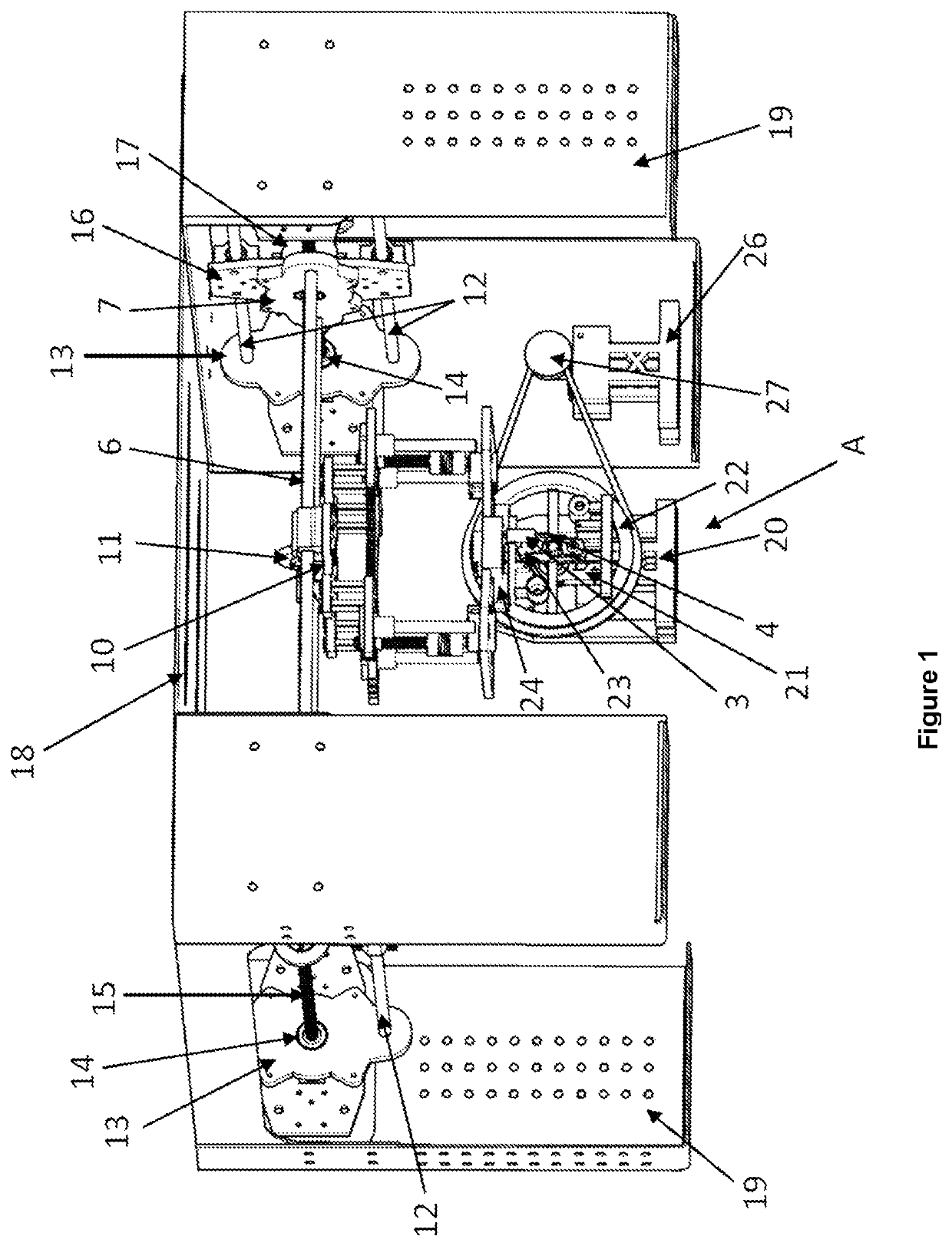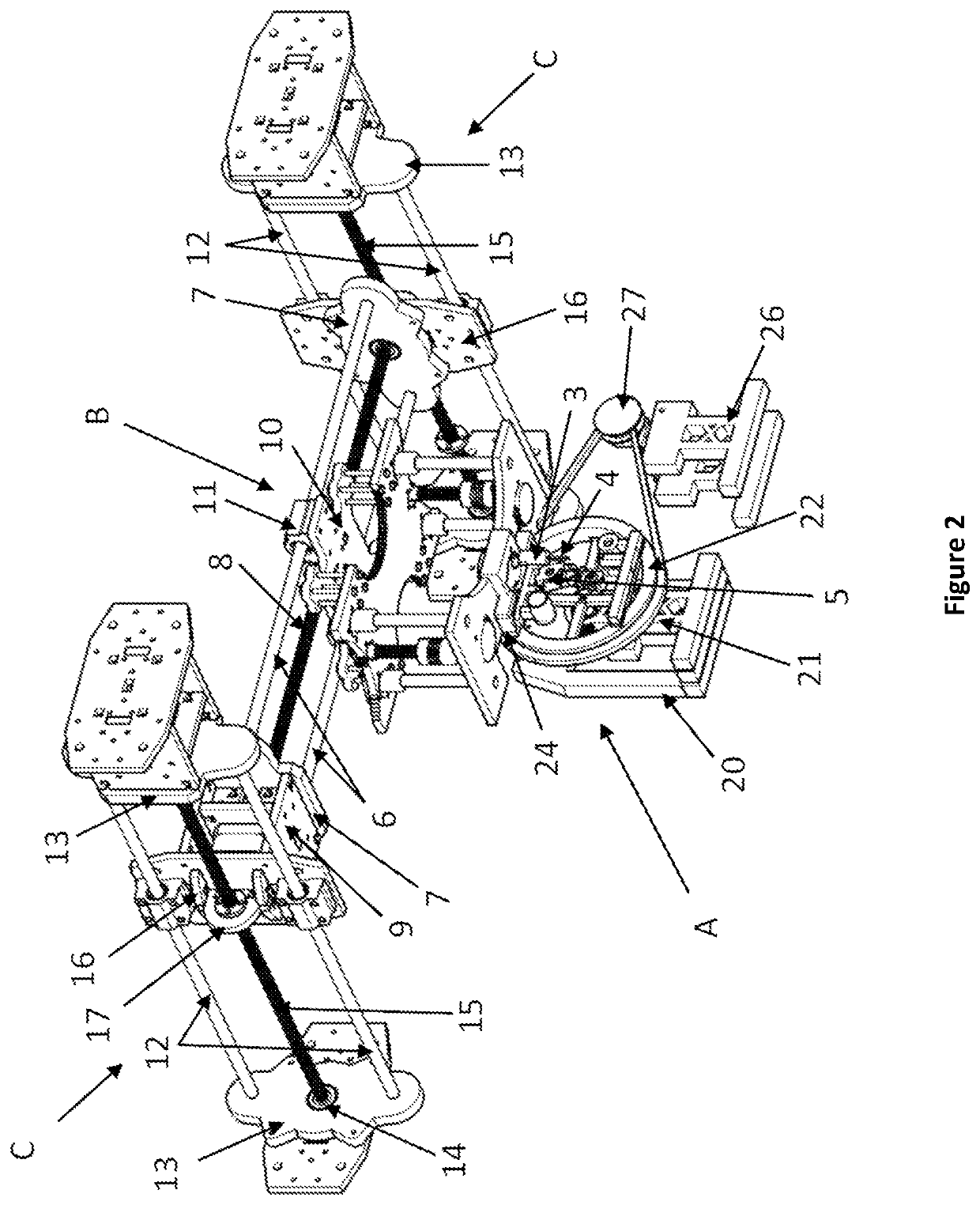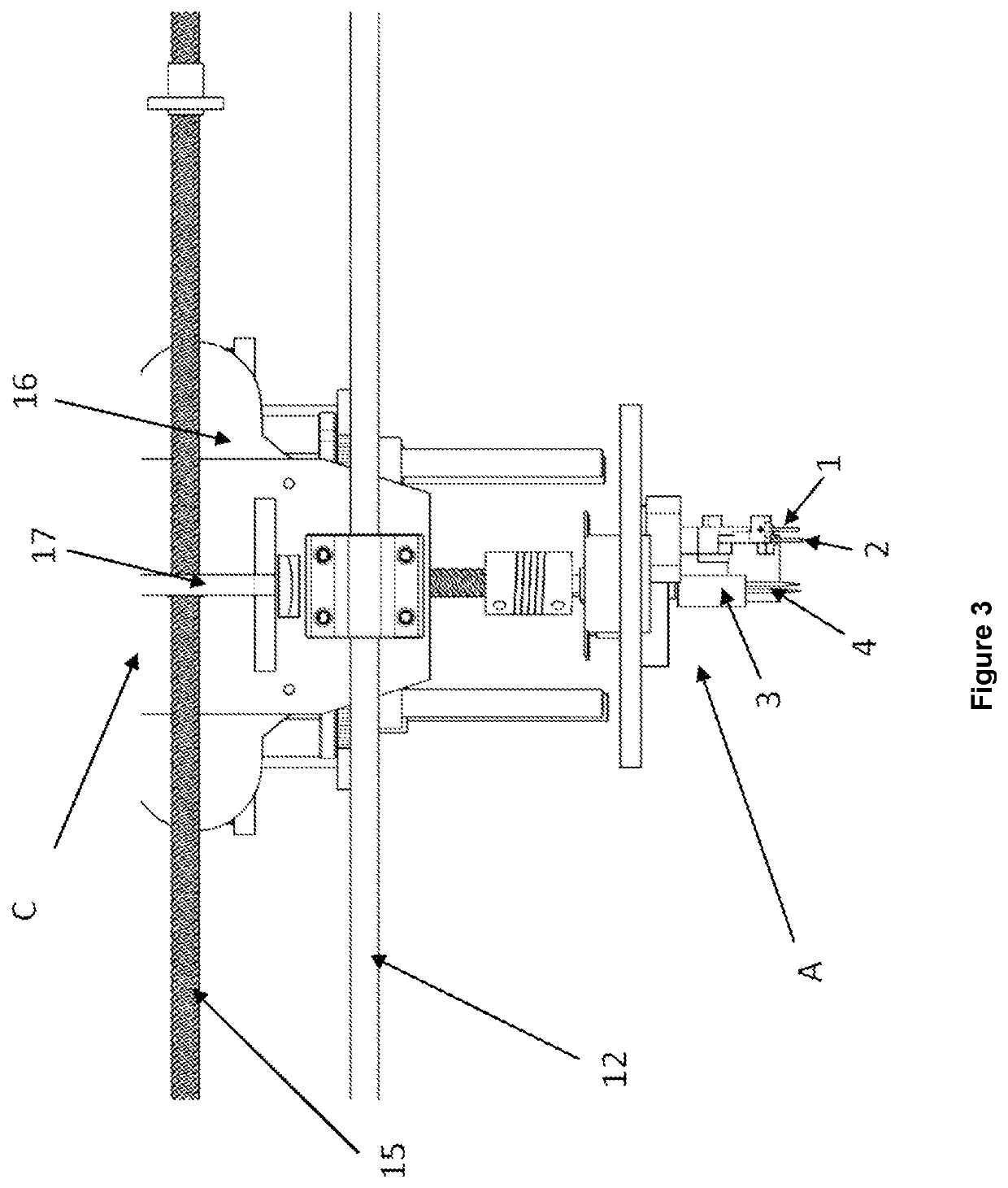Orthodontic wire-bending robot for lingual orthodontic technique
- Summary
- Abstract
- Description
- Claims
- Application Information
AI Technical Summary
Benefits of technology
Problems solved by technology
Method used
Image
Examples
Embodiment Construction
[0020]The present invention provides a novel lingual orthodontic wire bender robot, which allows its bending head to be moved through the X, Y and Z planes along the length, width, and height of the entire length of the central platform of the robot, thereby allowing greater precision in wire bending. The foregoing also provides the robot with the ability to perform bends by torque, carrying out horizontal, vertical, and sagittal compensations, so that the formed orthodontic wire presents inclination in its faces at certain angle and segment to be able to perform front rotation stresses.
[0021]To achieve the above, the lingual orthodontic wire bender robot of the present invention is comprised of:
[0022]a bending head (A), with a base having a motor coupled to a vertical lifting spindle that moves the head in the “Z” axis up to 35 mm, the bending head comprising:
[0023]an extrusion mechanism, which controls the advance and retreat of the orthodontic wire, which has a pair of parallel m...
PUM
| Property | Measurement | Unit |
|---|---|---|
| Length | aaaaa | aaaaa |
| Length | aaaaa | aaaaa |
| Length | aaaaa | aaaaa |
Abstract
Description
Claims
Application Information
 Login to View More
Login to View More - R&D
- Intellectual Property
- Life Sciences
- Materials
- Tech Scout
- Unparalleled Data Quality
- Higher Quality Content
- 60% Fewer Hallucinations
Browse by: Latest US Patents, China's latest patents, Technical Efficacy Thesaurus, Application Domain, Technology Topic, Popular Technical Reports.
© 2025 PatSnap. All rights reserved.Legal|Privacy policy|Modern Slavery Act Transparency Statement|Sitemap|About US| Contact US: help@patsnap.com



